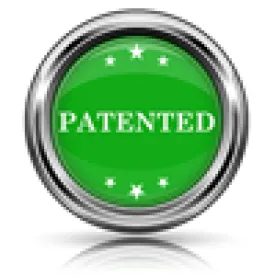Takeaway: A librarian’s testimony based on personal knowledge of library practices as to the publication date of an article could be persuasive evidence to establish the prior art date of a publication.
In its Final Written Decision, the Board granted Patent Owner’s Second Motion to Amend Claims, in which every challenged claim was canceled with the exception of claim 9, and found that Petitioner had established by a preponderance of the evidence that claim 9 is unpatentable. The Board also granted-in-part Patent Owner’s Motion to Exclude Evidence and denied Petitioner’s Motion to Strike.
The ‘788 patent is directed to “a system and a method for monitoring the condition of a vehicle.” After trial was instituted for claims 1, 3, 4, 6, 7, 8, 9, 11, 15, 16, and 18, Patent Owner filed a Second Motion to Amend Claims (after its first Motion was withdrawn and receiving authorization to file a second) seeking to cancel all challenged claims with the exception of claim 9. Petitioner did not oppose. The Board granted the Motion, and therefore, only addressed the challenge to claim 9, which was a claim depending from claim 7, which itself depends from claim 1.
In its Decision on Institution, review as to claim 9 was instituted based on alleged anticipation by the Fry reference. Patent Owner conceded that claim 9 would be anticipated by Fry if the reference qualified as prior art. Therefore, the parties agreed that the only issue remaining for the Board to decide was whether Fry was sufficiently publicly accessible prior to June 7, 1995 to qualify as prior art under Section 102(a). While Patent Owner described the question as an evidentiary one, the Board noted that whether the reference constitutes prior art is a part of Petitioner’s substantive case that must be proven.
Fry is a technical article that only indicated a copyright date of 1995. Petitioner provided several pieces of evidence to attempt to establish Fry’s public availability as early as January 1995. Patent Owner filed a Motion to Exclude much of Petitioner’s supporting evidence.
First, Patent Owner moved to exclude Petitioner’s evidence related to the Sage Publications Webpages as irrelevant and hearsay. In particular, Petitioner had downloaded the Fry reference from Sage Publications and provided printouts from the Sage website as evidence of Fry’s publication date. In addition, Petitioner submitted an Affidavit of Sarah Broadhurst to “lay the foundation necessary to establish the Sage Publications Website Printout (Exhibit 1012) as a record of a regularly conducted activity, i.e., a business record, under Federal Rule of Evidence 803(6).” The Board first denied the Motion based on relevance.
Turning to hearsay, the Board first found the Broadhurst Affidavit failed to lay the necessary foundation to admit the Sage Publications exhibits. In this regard, “Ms. Broadhurst has no stated knowledge of Sage Publications or their record keeping practices.” However, not all of the Broadhurst Affidavit was testimony concerning Sage Publications’ business records. Mr. Broadhurst testified, from her own personal knowledge as a “Library and Archive Assistant” at iMechE, as to the publication date of Fry. The Board found this testimony to not be hearsay and indicated that Ms. Broadhurst was free to consider inadmissible evidence in making her statements. Patent Owner could have cross-examined Ms. Broadhurst but chose not to do so. Accordingly, the Board granted Patent Owner’s Motion to Exclude the exhibits concerning the Sage Publications Website, but denied the Motion as to the Broadhurst Affidavit.
Patent Owner also moved to exclude Exhibit 1011 (the Fry Award) as irrelevant and hearsay and Exhibit 1013 (Fry Declaration) as hearsay or lacking a basis of personal knowledge. The Board found that the Fry Award was inadmissible hearsay. With respect to the Fry Declaration, the Board found the exhibit should be given minimal weight, but did not exclude the evidence. In particular, the testimony in the Fry Declaration relied upon the Sage Publications Website evidence, about which Fry had no personal knowledge, and the Fry Award, which does not state the publication date.
Turning to whether Fry is prior art, the Board was persuaded based on the Broadhurst Affidavit that Petitioner established that Fry was available in January 1995, and therefore, was prior art. Although date-stamped copied of Fry in the record were dated in September 1995, Ms. Broadhurst testified that Fry was received on November 25, 1994 and published “as of January 1995” based on her experience as a librarian. The Board found this evidence persuasive.
Finally, the Board denied Petitioner’s Motion to Strike as moot because the Motion related to Exhibit 1012, which the Board had decided to exclude.
Toyota Motor Corporation v. American Vehicular Sciences LLC, IPR2013-00417
Paper 78: Final Written Decision
Dated: January 7, 2015
Patent: 8,036,788 B2
Before: Jameson Lee, Barbara A. Parvis, and Gregg I. Anderson
Written by: Anderson
Related Proceedings: American Vehicular Sciences LLC v. Toyota Motor Corp., No. 6:12-CV-405 (E.D. Tex.); IPR2013-00414; IPR2013-00415; IPR2013-00416; IPR2013-00417



 />i
/>i
